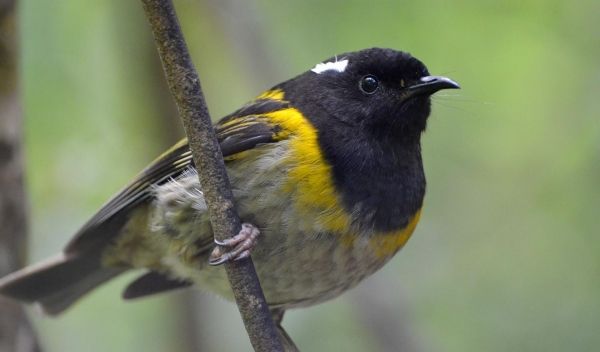Remote recording devices used to ‘eavesdrop’ on a reintroduced population of one of New Zealand’s rarest birds have been heralded as a breakthrough for conservation.
Scientists from ZSL, Imperial College London and conservationists from the Rotokare Scenic Reserve Trust used acoustic monitoring devices to listen in on the ‘conversations’ of New Zealand’s endemic hihi bird, allowing them to assess the success of the reintroduction without impacting the group.
For the first time ZSL scientists were able to use the calls of a species as a proxy for their movement. A happy hihi call sounds like two marbles clanging together in what is known as the ‘stitch’ call. Scientists saw the calls change from an initial random distribution to a more settled home range – marking the hihi reintroduction and the new method a success.
The study, published in Methods in Ecology and Evolution, was carried out in the Rotokare Scenic Reserve in the Taranaki region of North Island, where 40 juvenile birds were released in April 2017. The first time hihi have been seen in the region since their regional extinction over 130 years ago.
Read more at Zoological Society of London
Image: This is a male hihi bird. (Credit: (c) ZSL)


